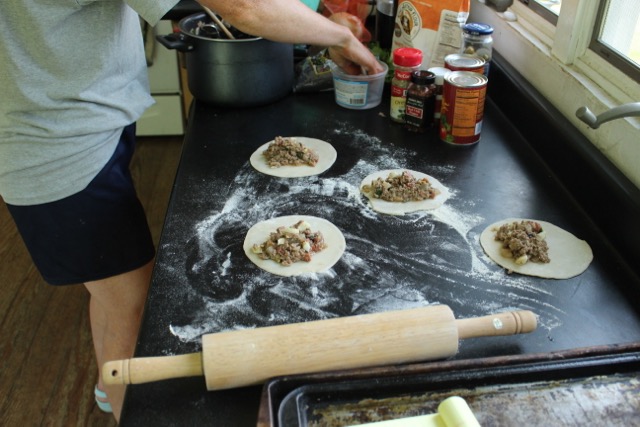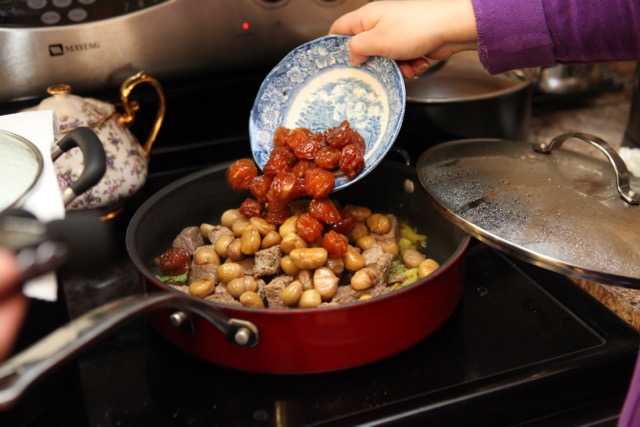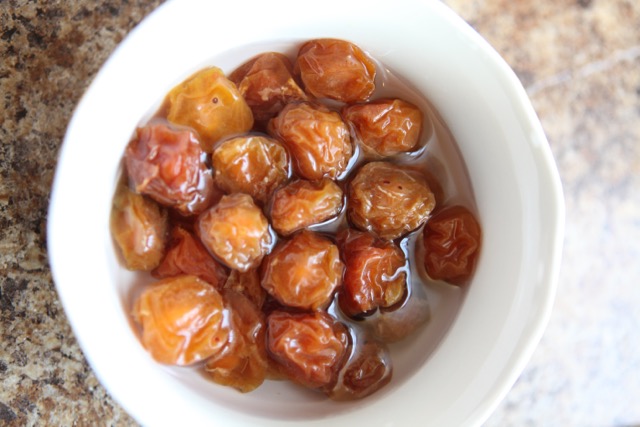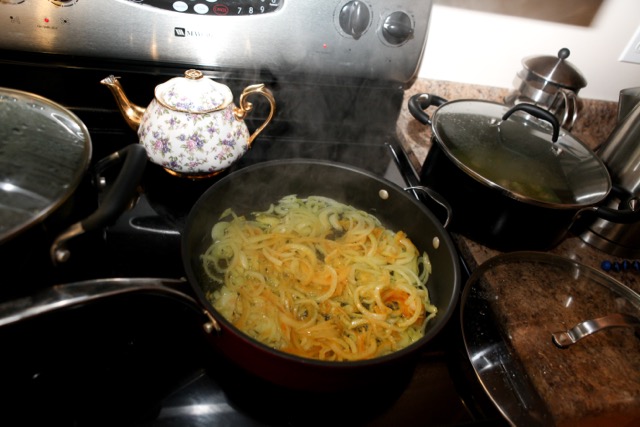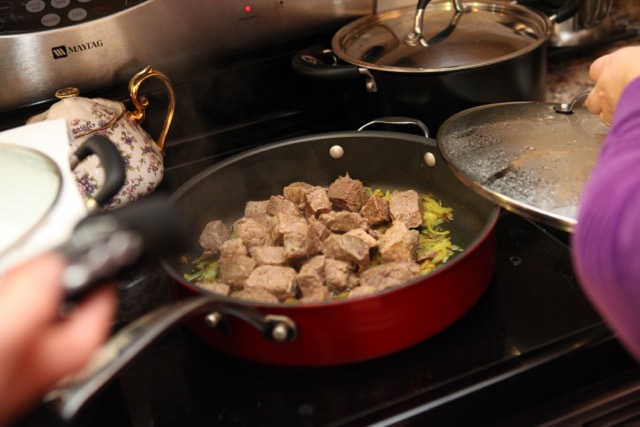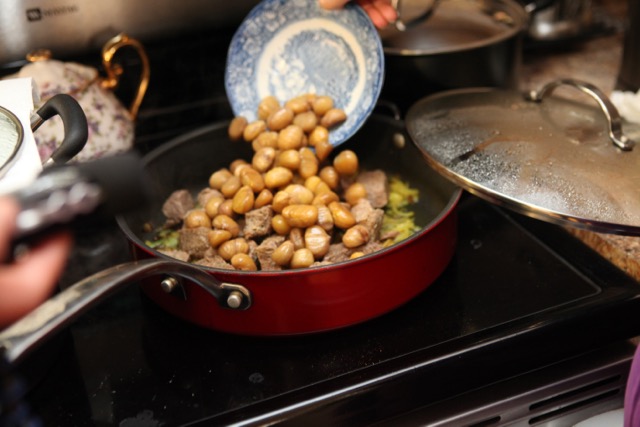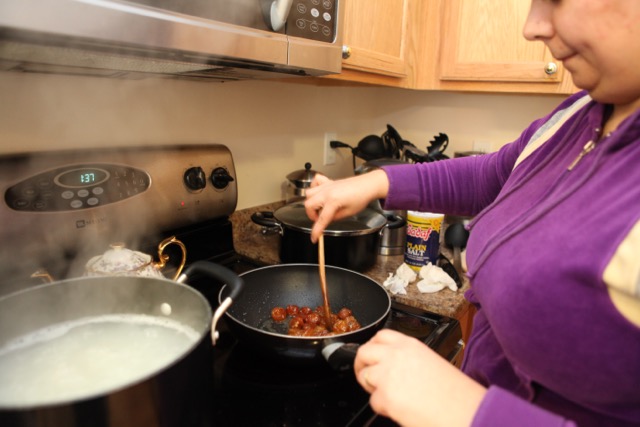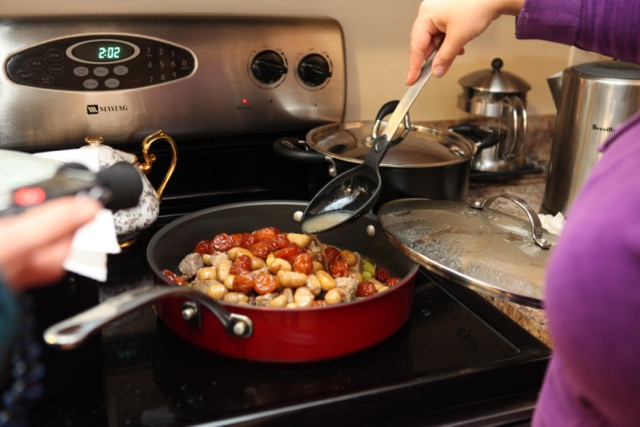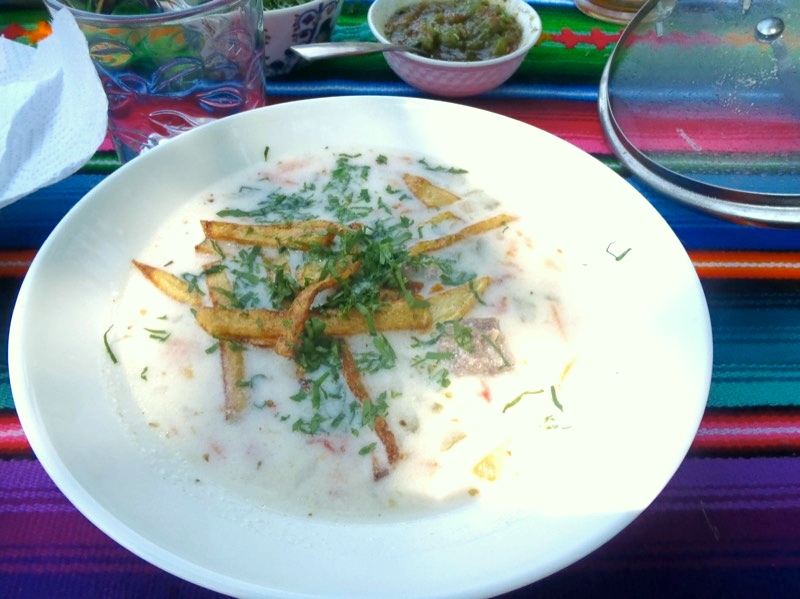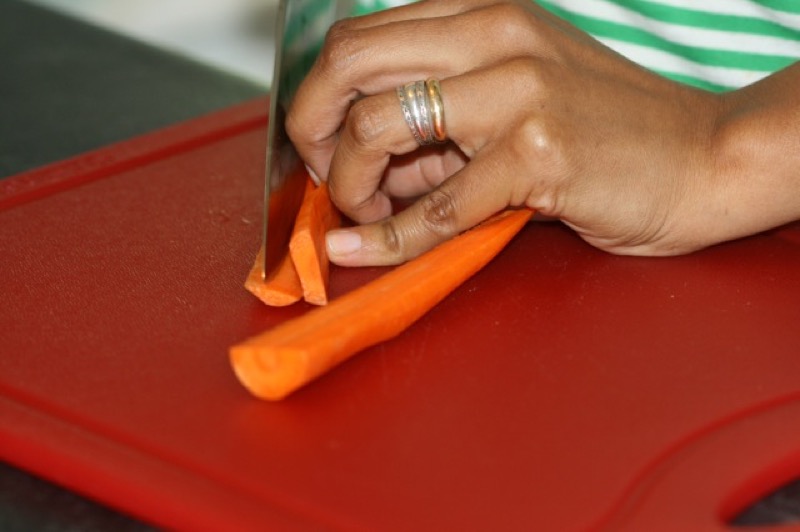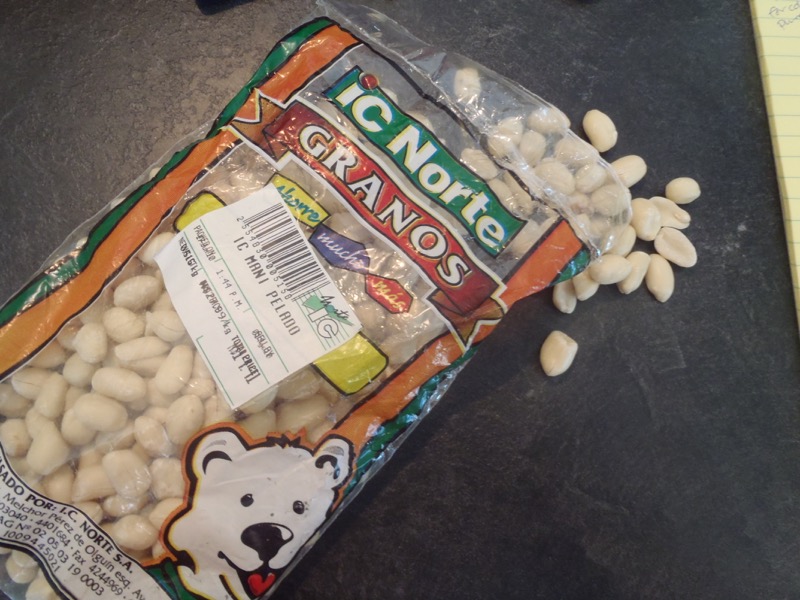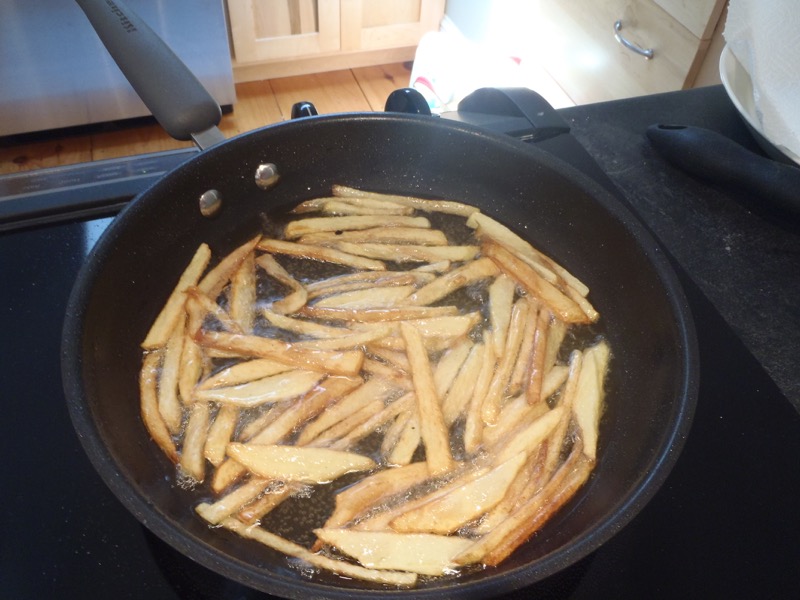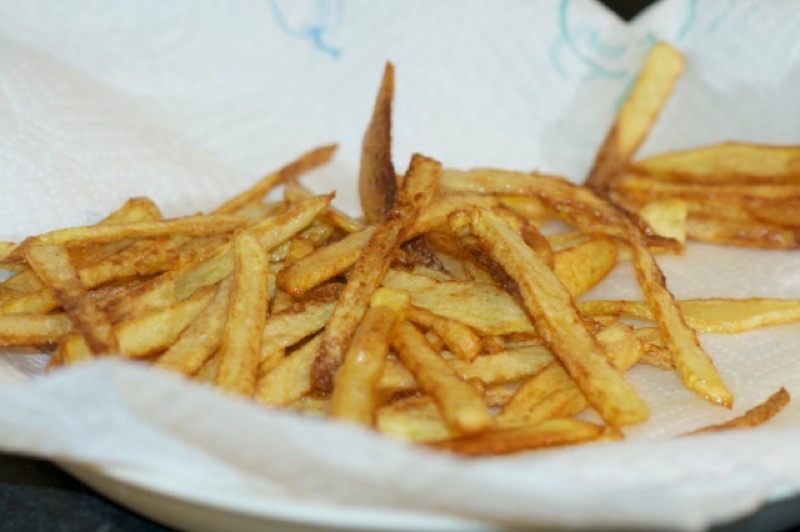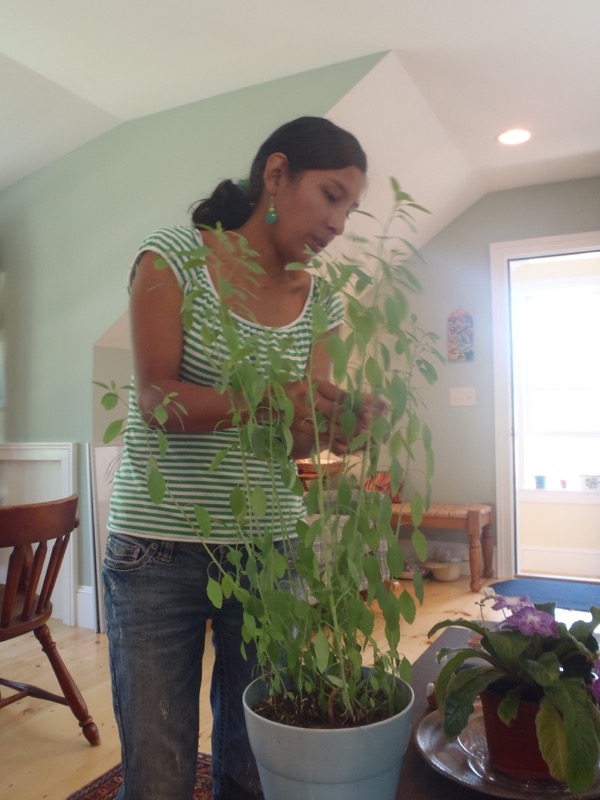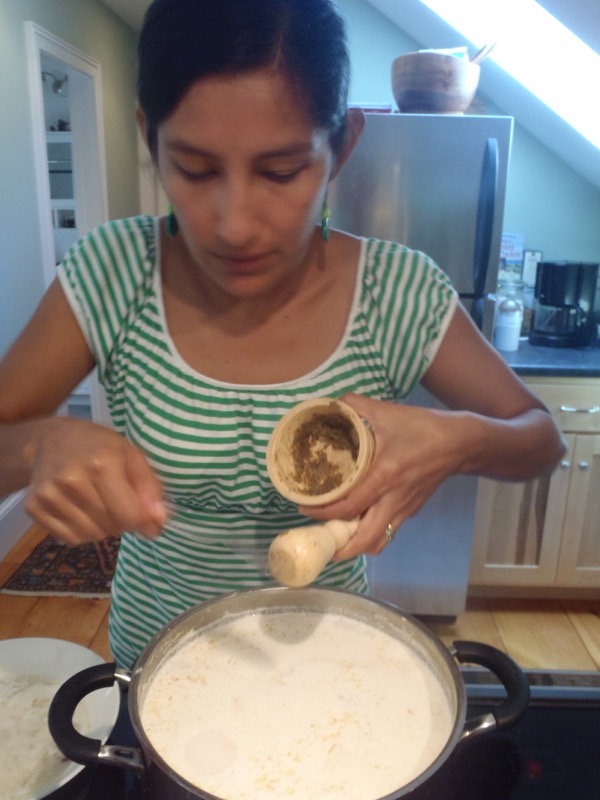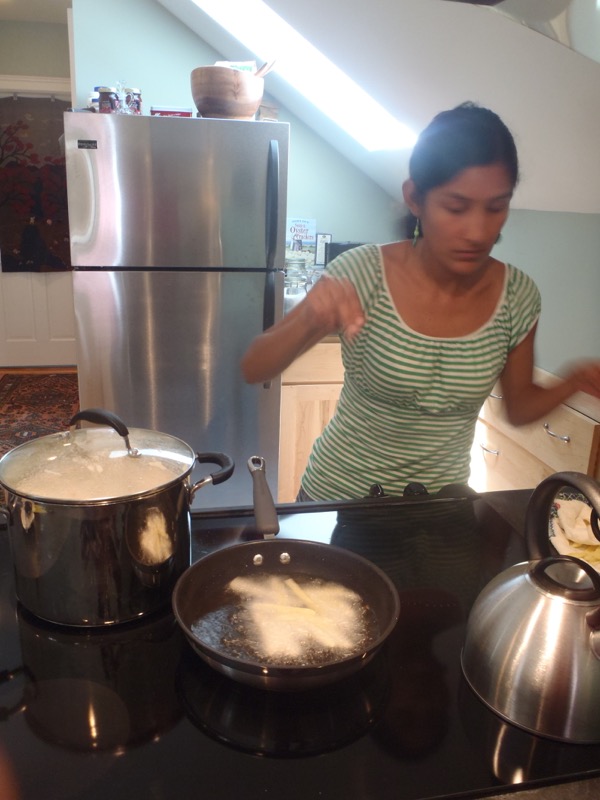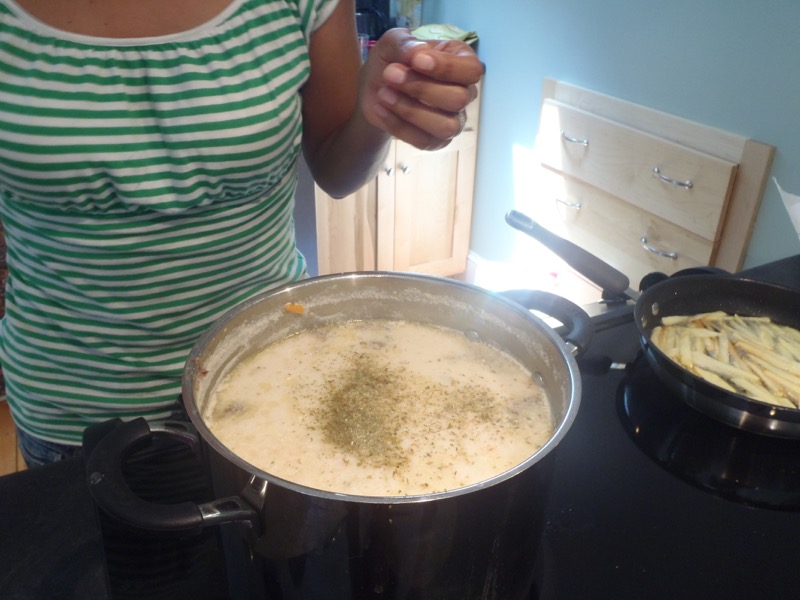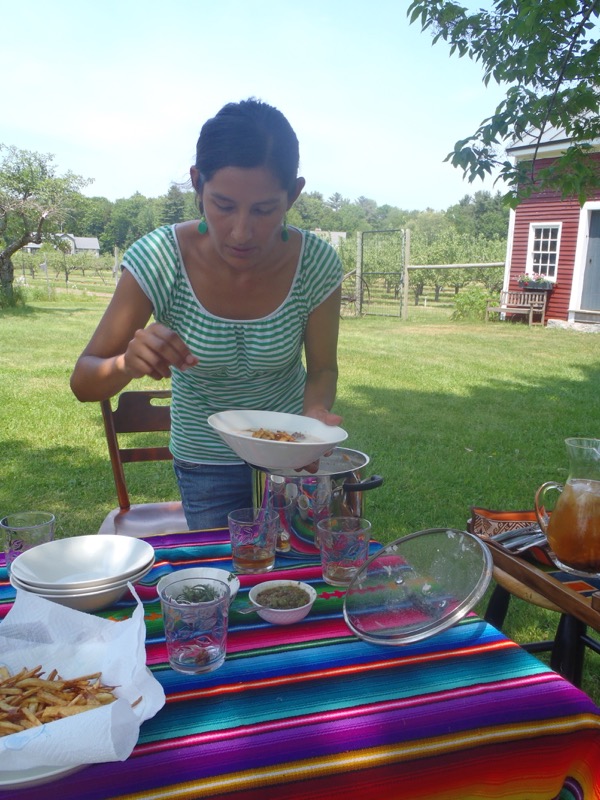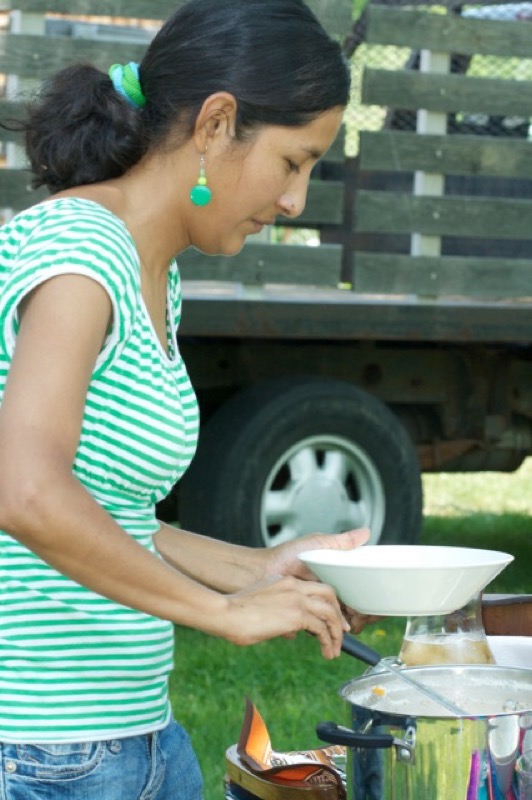Empanadas
As Valy Steverlynck, from Luján, Argentina, taught Lindsay Sterling in Freeport, Maine.
Serves: 12-24 depending on how big you make them
Active time: 1 hour
Total time: 1 hr (if you use pre-made dough) to 2 days if you make your own dough and prep the filling the day before.
Note: For the dough, Valy used pre-made empanada discs or "discos" as they are named on the package. They're sold in the freezer of Latin markets and some supermarkets. These make this recipe really easy. I've provided a dough recipe for those who want to make dough from scratch.
For the dough:
- 2-3 packages pre-made empanada dough discos OR:
- 6 cups flour
- 1 1/2 sticks butter, cut into 1/2 inch pieces
- 1 egg, mixed up
- 1 egg for egg wash at the end
- two dashes salt
- 5-7 Tbsp cold water
For the filling:
- 2 eggs
- 1/2 cup oil
- 1 onion, diced
- 1 lb. ground beef
- 1 cup diced tomatoes
- 1 Tbsp oregano
- 1 tsp chili flakes
- 1 Tbsp paprika
- 1 tsp salt
- 1 tsp cumin
- 1/4 cup raisins
- 1/2 cup fresh parsley, rough chopped
- 1/4 cup green olives, chopped
- dash cayenne or hot chili powder to taste
For the glaze:
- 1 egg
Equipment
- 2 half sheet pans or cookie sheets
- rolling pin
- 2 cereal bowls
- 1 small bowl
- spatula
If you are making your own dough:
- large food processor or large bowl with fork/pastry cutter
- wax paper
- plastic wrap
Instructions
1. If you are using the pre-made empanada dough, skip ahead to item number two. If you are not using the pre-made dough discs, make the dough a day ahead of time if you can. Put flour, salt, the mixed egg, and butter in a food processor or use a fork or your fingers to cut the butter into the flour until you have what looks like course coarse corn meal. Add 5 Tbsp ice cold water and blend briefly until the dry flour-y look is gone, but what you see is still loose and crumbly, not dough-y. Try squeezing the loose pieces together. Do they stick together? If not, then continue mixing in water teaspoon by teaspoon until they do. When the crumbles do stick together when pressed, then dump half the contents onto a sheet of wax paper, and the other half on another sheet. Press the contents on the wax paper into a long rectangular pile perpendicular to you and roll the wax paper over tightly so you make the dough into a cylinder, about 2 inches in diameter, contained in wax paper. Do this with the other pile and wax paper. Refrigerate the cylinders wrapped in plastic wrap for thirty minutes or better, over night.
2. You can make the filling the day before, too, if you like. Hard boil 2 eggs. Saute onions in oil. When soft, add ground beef, spices, tomatoes and salt. When beef is all the way cooked, mix in parsley, hard boiled eggs (cut into 1/4 inch pieces), green olives and raisins. Refrigerate until you want to assemble and cook the empanadas.
3. Take the package of dough discs out of the freezer or your handmade dough and put out on the counter to soften.
4. Preheat oven to 350.
5. Assemble the empanadas. If you're using the store-bought discs, you can roll them out a little thinner on a generously floured counter top. Also dust the tops of the dough with flour to keep the rolling pin from sticking.
If you're using your homemade dough, unwrap the wax paper, cut across the cylinder to make 2-inch thick pieces. Flour your counter and your rolling pin and roll a piece out in to a circle about 4 inches in diameter.
Put a cereal bowl upside down on the dough and trim off any excess. Put 2 Tbsp filling on the bottom half of the disc, keeping the edges of the disc clean. Dipping your finger in a small bowl of water, wet the edge of the dough so that when you fold the dough over the filling to make a half circle, you can press the dough together along the outer edge and it sticks, sealing the filling inside.
Press the tines of a fork along the sealed edge (like rays shining out from the filled center) to make a pretty pattern. Or you can fold the edges on top of themselves (see pictures above).
6. Repeat with the rest of the dough and filling, putting each assembled empanada on a sheet pan or cookie sheet. Prick the top of each empanada with a fork. Mix up the last egg in a small bowl and brush the tops of all the empanadas with egg wash.
6. Bake for 20 minutes or until golden and shiny. Serve immediately.
THE STORY BEHIND THE RECIPE
PRINT THIS RECIPE
HOW DID IT WORK FOR YOU?
Help me improve this site by sharing your experience in the comment box below.






